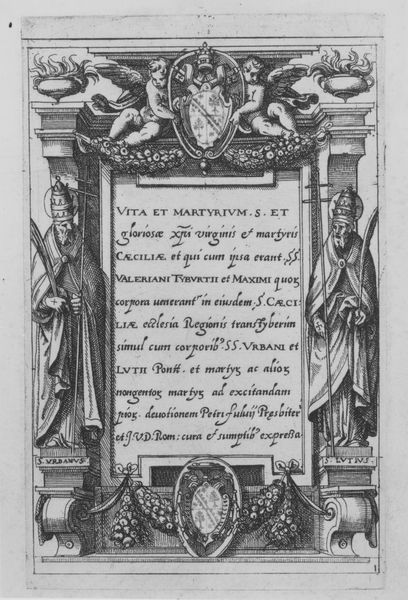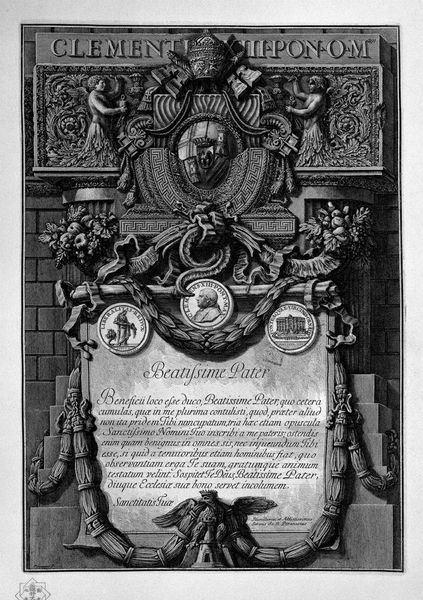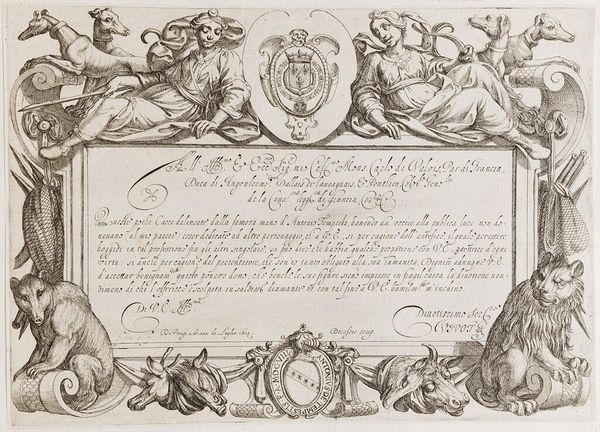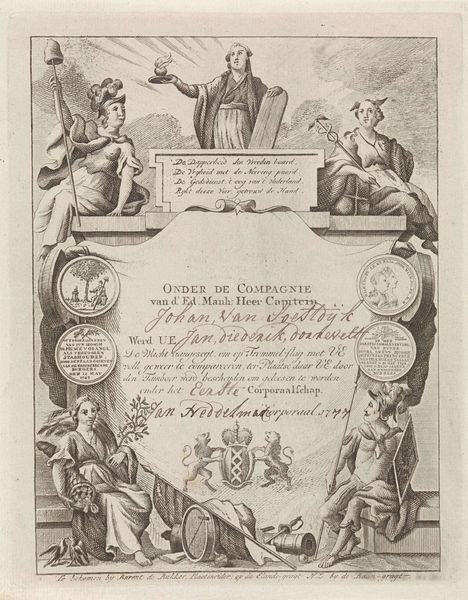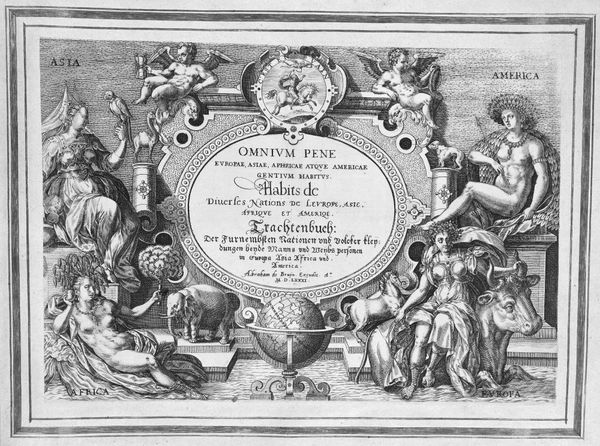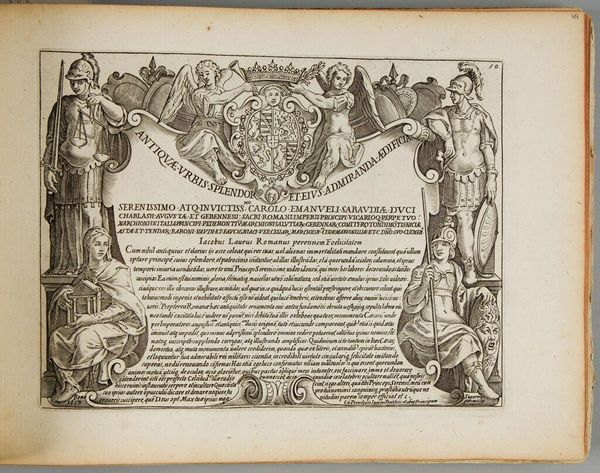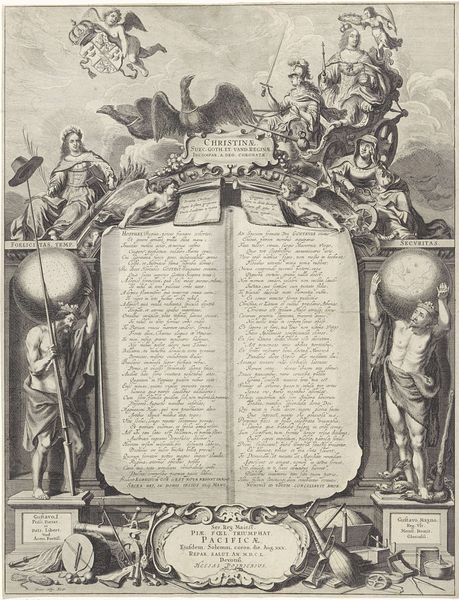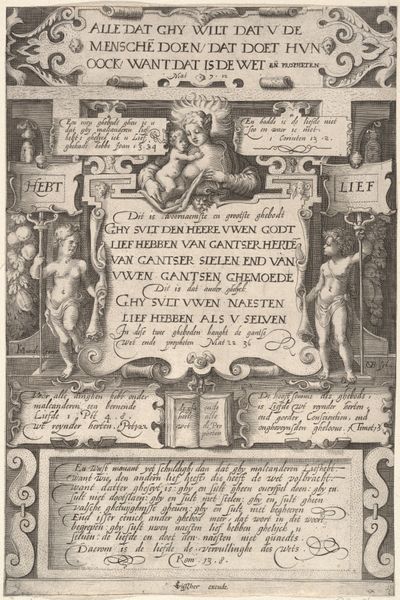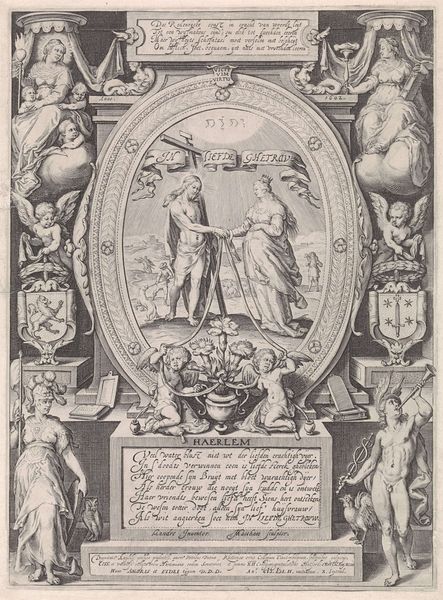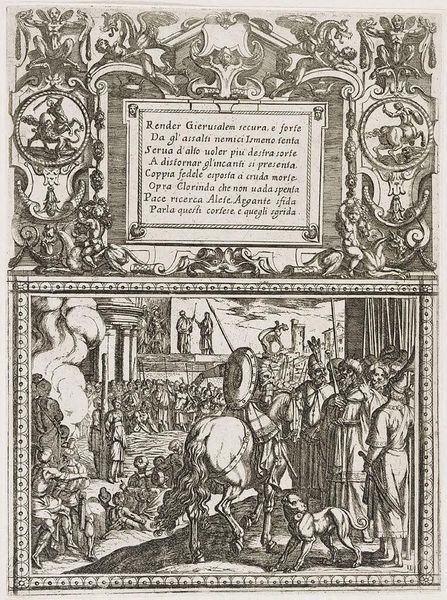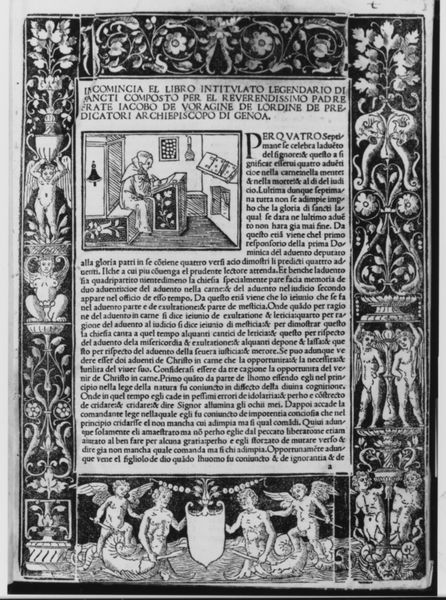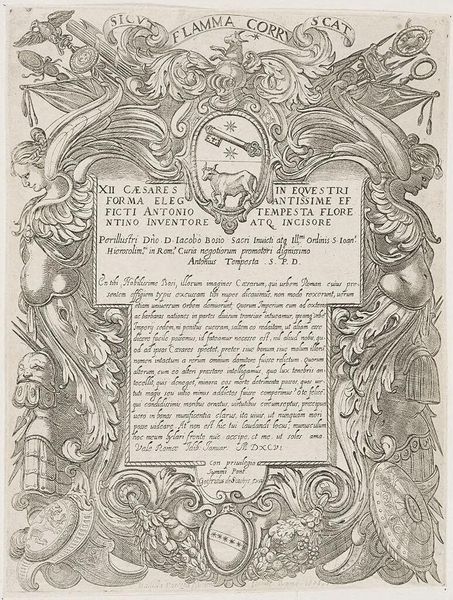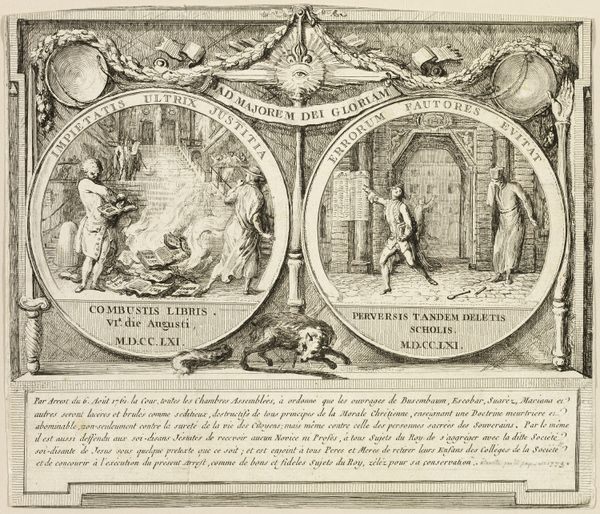
print, engraving
#
baroque
# print
#
figuration
#
history-painting
#
engraving
Dimensions: 305 mm (height) x 198 mm (width) (bladmaal)
Curator: As we examine this print housed here at the SMK, note the detailed engraving portraying "Moses with the Tablets of the Law," dating back to between 1602 and 1653 by an anonymous artist. Editor: My immediate reaction is one of severity, a rigid decree written into every precisely etched line, a really powerful illustration despite the lack of color. Curator: Yes, the artist captures that commanding authority through a distinctly Baroque style, presenting not only a key figuration but also invoking history painting conventions. What do you make of that heavy-handed contrast between darkness and light? Editor: It speaks to the complex cultural politics of religious representation. Think of the socio-historical tensions, the power dynamics inherent in conveying divine law and legacy through art. Consider too how printmaking enabled dissemination of these messages beyond the elite, democratizing the imagery, and opening possibilities of critical evaluation. Curator: I agree. It also embodies the anxieties of that era; Moses appears almost burdened by the tablets, the angels perhaps representing a yearning for salvation. This work also mirrors contemporary ideas about law and authority. Editor: It encourages a needed re-evaluation of power constructs. Considering whose history and whose laws are enshrined, and more importantly, who is left out. How did imagery like this enforce the status quo? Who benefits? Curator: And its afterlife too is significant. These images reinforce narratives even today. What we deem "classical" directly impacts how our current ideologies play out. Editor: Indeed. Examining the composition's visual authority challenges that continued projection of values, urging an investigation into the lasting impact that representation bears. Curator: Absolutely, viewing this engraving prompts vital dialogue, allowing us to question and engage in current political conversation. Editor: By interrogating visual culture from centuries past we get to build more robust frameworks for equity today, one interpretation at a time.
Comments
No comments
Be the first to comment and join the conversation on the ultimate creative platform.
